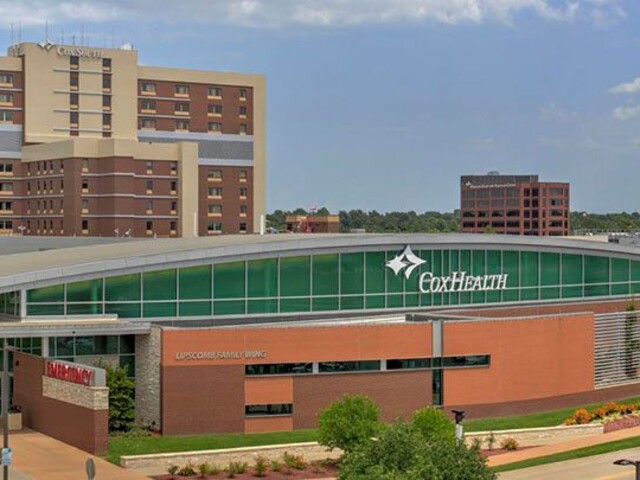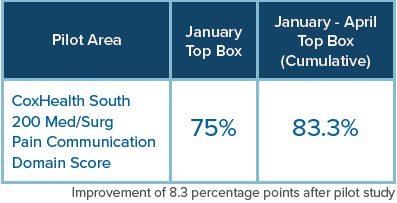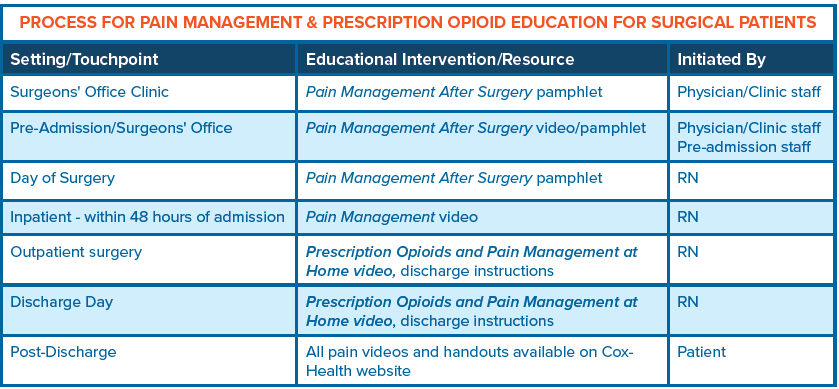Licensed Beds
1,012
Get in Touch!Call us at 800.999.8590 or Mon - Fri : 9 A.M. - 5 P.M. |
Already a Client?Need Support? |
NOTE: In April 2022 TeleHealth Services was rebranded under the name of our sister company, Avidex. The consolidation of our brands significantly enhances our capabilities to create better experiences for patients, visitors, and staff. Case studies may have been written under our former name, but now reflect the Avidex brand.
1,012
2013
Springfield, MO
11,668

According to the White House’s Council of Economic Advisers, the cost of the opioid crisis throughout the country was $504 billion in 2015 (nearly 3% of gross domestic product that year).1 Hospitals have felt the growing financial impact of prolonged length of stays, avoidable readmissions, and decreased patient satisfaction due to this issue.2,3 Far more devastating than these losses is the cost of human lives. According to the Centers for Disease Control and Prevention, the incidence rate of drug overdose deaths involving opioids increased from 1.0 per 100,000 in 1999 to 4.4 in 2016.4 As hospital leaders prepare to update their approaches to pain management, they face a number of challenges.
Difficulties arise when patients lack the knowledge needed to set realistic expectations and communicate with caregivers about their pain. Hospital staff members also face barriers in managing their patients’ pain whenever they lack information, resources, and clear, consistent guidance on expected behaviors. Hospital administration must address outdated pain management policies and protocols to align with changing practice in pain management.
CoxHealth in Springfield, MO, is one such hospital system that strategically prioritized addressing the opioid crisis in spite of challenges and barriers. The latest data from the CDC paints an alarming picture for the state of Missouri, with the death rate from opioid overdoses increasing 31.8% from 2015 to 2016 (CDC). In late 2017, hospital leaders felt a shared sense of urgency to respond to this crisis and assembled a multidisciplinary task force to lead the crucial efforts.
The task force of pharmacists, physicians, nurses, patient and staff educators, patient experience specialists, and administration defined patient and community education as their primary purpose. As a six-hospital system with clinics, urgent care facilities, and affiliations with post-acute facilities, the opioid task force realized the need to communicate consistent messages about pain and opioids across the continuum of care in their largest facility, Cox Medical Center South. Patient Education Coordinator Tina Tarter-Hamlet, MSN, RN suggested video education as a part of the task force’s strategy. “We show 5,000 patient education videos each month through our Tigr interactive television system at CoxHealth,” states Ms. Tarter-Hamlet. “It was thus a natural fit to add pain education to a system we already use and our patients benefit from daily.”
While a growing evidence base supports the efficacy of video education for patients in general, recent research points specifically to the positive impact of video education on pain perception and pain management in post-operative patients.5 “Education is empowerment, and patients look to us as healthcare professionals for information they can trust,” says Ms. Tarter-Hamlet. CoxHealth’s opioid task force developed four educational videos and accompanying written materials to provide comprehensive education about pain and opioids. Topics included general information about pain, reporting of pain, pharmacological and non-pharmacological therapies, and safe use and disposal of opioids. CoxHealth’s videos were added to the Tigr system, which allowed for the bundling of videos into a pain education curriculum.
Next, a process was developed, outlining the specific education to be delivered at key touchpoints throughout a patient’s surgery experience. The new workflow spanned the continuum of care and highlighted two key resources – a multidisciplinary care team model and CoxHealth’s Tigr TV system.
“We wanted to make this initiative easy for our nurses to embrace,” explains Ms. Tarter-Hamlet. “Their time is very much in demand. With the new process, pain education is not solely the nurse’s responsibility, but is a team effort with staff from different disciplines and settings actively involved. The Tigr system also helps with time management; care team members can quickly assign pain videos and push-to-play on the TV right from their workstations. Video education is also automatically documented to the patient’s EMR, saving clinicians the time it would take to manually document.”
“Our hope is this new way of teaching people about pain will make a difference for the entire community and help save lives." - Tina Tarter-Hamlet, MSN, RN, Patient Education Coordinator
Staff training was conducted to familiarize CoxHealth employees with the new pain education initiative. Care team members were also given a toolkit, which included written patient education material, a flowchart of the new process, a FAQ document with answers to common questions from patients, and CoxHealth’s new pain management policy. Upon completion of the rollout to staff, a pilot of the new pain education process began on the CoxHealth Surgical unit.
Results from the pilot test conducted in April 2018 suggest that the new pain education initiative resulted in immediate, significant improvements reflected in the unit’s Press Ganey scores on pain communication.
“Our pilot focused on level-setting patient expectations and increasing the cohesion of pain management communication across the system and between encounters,” states Joel Daniel, PharmD, MS, CPPS, System Medication Safety Pharmacist at CoxHealth. “Thus our target was increased patient satisfaction scores centered on pain management.”
 Following the pilot, CoxHealth interviewed and surveyed the patients for their feedback. The results suggested a significant impact to both quantity and quality of pain communication between patients and caregivers. Among the findings, it was noted that:
Following the pilot, CoxHealth interviewed and surveyed the patients for their feedback. The results suggested a significant impact to both quantity and quality of pain communication between patients and caregivers. Among the findings, it was noted that:
Patient satisfaction reflected in the test unit’s Press Ganey Pain Communications scores also demonstrates increases in their “top box” measurements.6
Kaylyn Lambert, Director of Patient Experience for CoxHealth best describes this success:
“Within the patient experience world, we don’t often see significant changes in data that is reflected from a specific project in a short amount of time. To see an increase in top box of 8.3 percentage points that is a direct impact from a pain communication focus really shows the significance that this project has had on our patient population and will continue to have on our system.”
Upon completion of the pilot, the new pain education process was implemented system-wide. The Orthopedic unit at the CoxHealth MORH facility successfully now uses a workflow that involves an interdisciplinary approach educating patients with the involvement of nurses, therapists and pharmacists. Ms. Tarter-Hamlet also states, "Our hope is this new way of teaching people about pain will make a difference for the entire community and help save lives."

1. Whitehouse.gov. (2017). Council on Economic Advisors report: The underestimated costs of the opioid epidemic. Retrieved from https://www.whitehouse.gov/briefings-statements/cea-report-underestimated-cost-opioid-crisis/
2. Odera, G.M., Said, Q., Evans, S., Stoddard, G.J., Lloyd, J., Jackson, K., Rublee, D. & Salmore, M .H. (2007). Opioid-related drug events in surgical hospitalization: Impacts on costs and length of stay. The Annals of Pharmacotherapy 41(3) 400-407. Available at https://doi.org/10.1345/aph.1H386
3. Shafi, S., Collingsworth, A. W., Copeland, L. A., Ogola, G.O., Qui, T., Kounzetsova, M., Liao, I.C., …Masica, A.L. (2018, May 23). Association of opioid-related adverse drug events with clinical and cost outcomes among surgical patients in a large integrated health care delivery system. Journal of the American Medical Association Surgery. doi: 10.1001/ jamasurg.2018.1039. [Epub ahead of print].
4. Centers for Disease Control & Prevention. (2017, December). Drug overdose deaths in the United States,1999-2016. Retrieved from https://www.cdc.gov/nchs/data/databriefs/db294.pdf
5. American College of Surgeons. (2012,May). JACS study reports patient education videos benefit patients. Retrieved from https://www.facs.org/media/press-releases/jacs/
pated0512
6. The top box score is the percentage of survey responses in the highest possible category. For this study, the data references how many patients in the pilot responded “Always” on the Pain Communication Domain portion of the HCAHPS survey.
Connect with one of our audiovisual experts and start creating an unforgettable AV experience today!
Get In TouchCall us at 800.798.0330 or
complete the form below and
we'll respond in 1 business day or less.